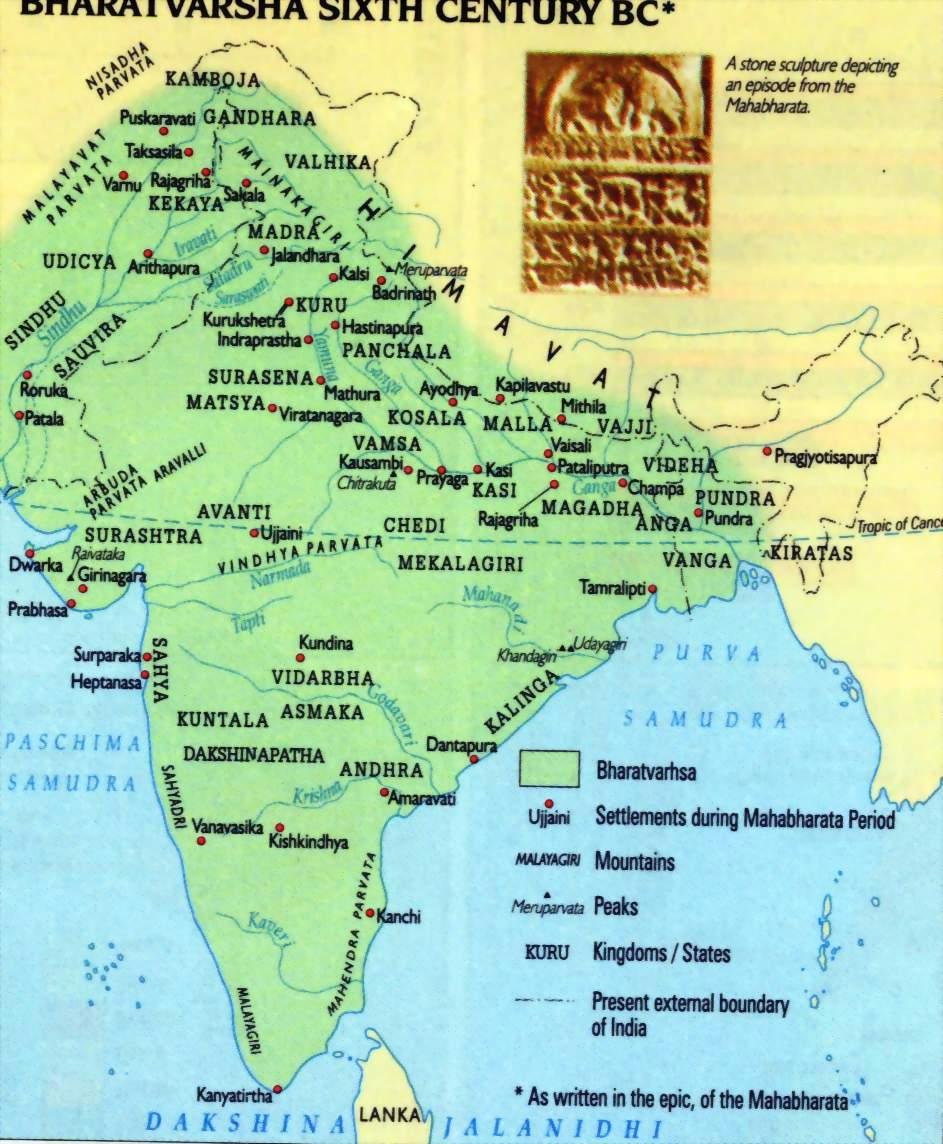
A Map of Ancient India
by Willard Squire

A Map of Ancient India
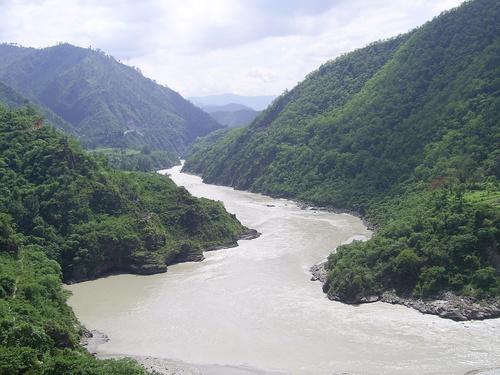
A picture of the Ganges River. A bountiful river that flows through the northern part of India, creating lush areas that were ideal for farming, and later on, and cities. Some consider it a more stable environment than its counterpart, the Indus river, yet it was the latter that ended up naming the area (Connections, page 45, paragraph 3).
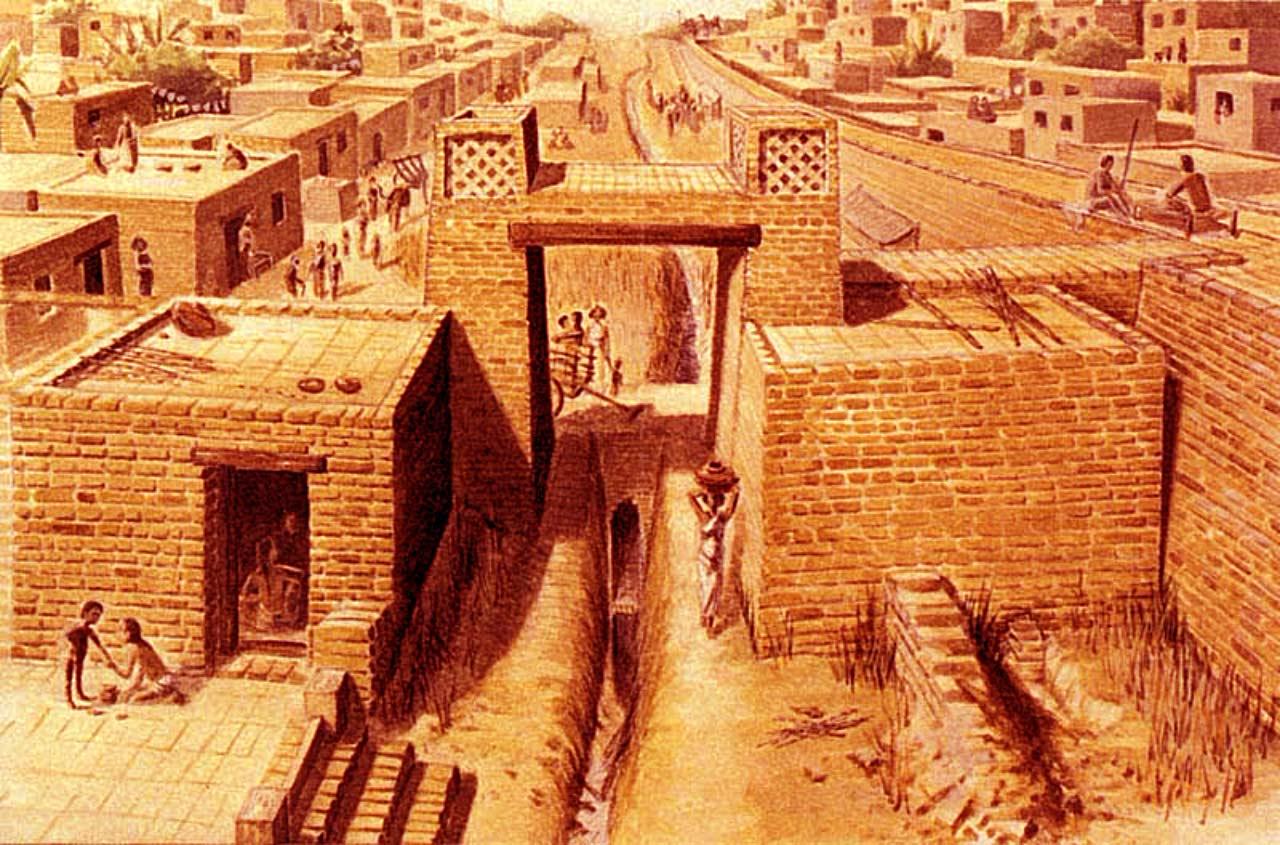
An artist's rendition of the Harappan civilization. From roughly the time period around 2800 to 1700 b.c., the Harappan civilization began sprouting up (Connections, page 45, paragraph 5). The civilization was rather advanced for its time, with houses that had air conditioning and a well maintained drainage and sewage system (Crash Course World History #2). They were also a pretty peaceful civilization, with almost no evidence of wars or weapons found.

Here we have a picture of cotton cloth, which those in the Indus Valley would trade for items like bronze, which could be used in a various number of things (Crash Course World History #2). This would later go to the extent where these extremely ornate seals would be found all the way in Mesopotamia.
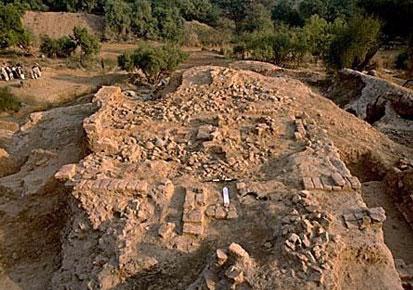
Around 2000 b.c., the Harappan and Indus civilizations began to decline. whether this was due to changes in climate, new diseases, over-farming, or a massive shift in the land itself, all historians know is that the population had decreased (Connections, page 47, paragraph 4). This decrease in population led for a mass exodus from the cities to smaller farming towns in the area.
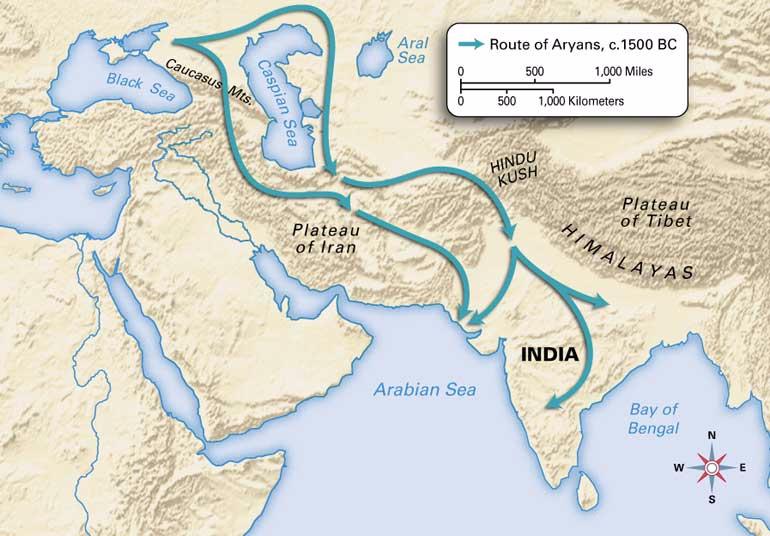
After the decline of the major cities in the Indus Valley, the area saw an influx of immigrants from the north west. Historians theorise that these nomads were the Aryans, who started in the Indus Valley, and then made their way down through India, all around the time frame of 1500 to 500 b.c. (Connections, page 48, paragraph 1). They would get into some conflicts with the natives, but eventually they would find some understanding and common ground, politically.
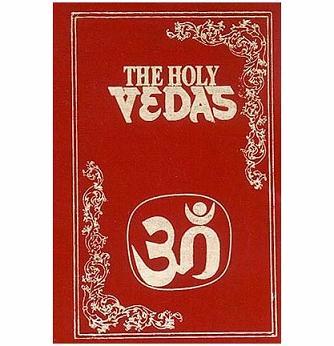
AS stated before, the Aryans arrived in India around 1500 to 500 b.c. (Connections, page 48, paragraph 1). Their society was labeled as a Vedic society, which revolved around hymns called Vedas that were used in religious ceremonies. Since there was no written Aryan language until 800 b.c., the Vedas were passed down orally, from priest to priest (Connections, page 48, paragraph 5).
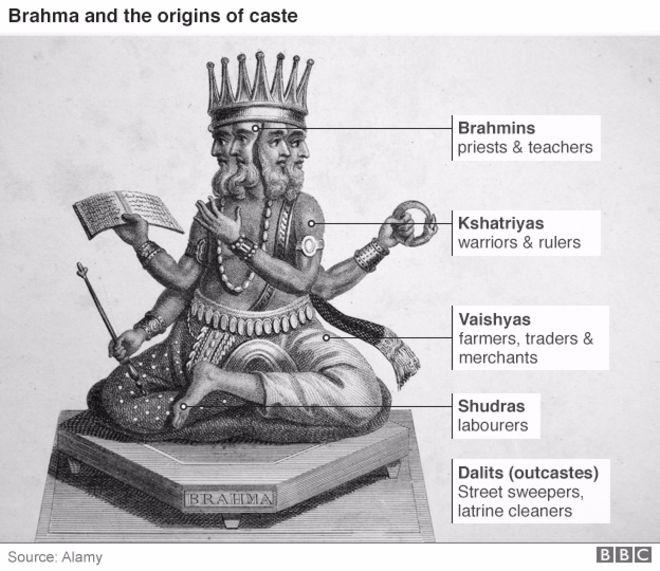
Here we have a picture of the caste system. This system would set forth the social class structure for the entire Indian society. As seen in the diagram, religious leaders were placed in higher esteem than any other member of society, even the actual kings (Crash Course World History #6).
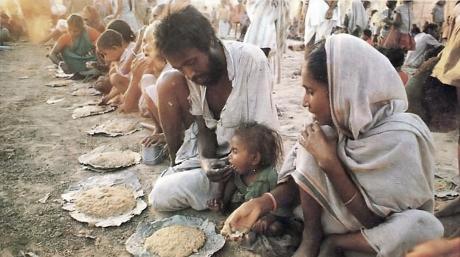
At the very bottom of the caste system, so far down that it's below the feet (or the Shudras), are the Untouchables. These people would receive the lowest of the lowest jobs and responsibilities that a person could receive. To keep these people relatively happy, is the belief of dharma, also known as reincarnation. Basically, if you're a great untouchable, then when you die, you have a chance of becoming higher up on the totem pole (Crash Course World History #6).
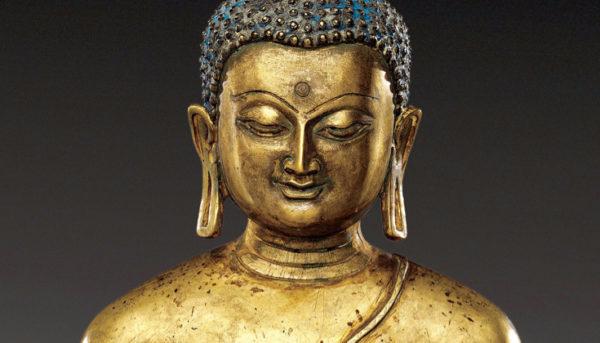
In contrast to Hinduism, which the caste system derived from, came Buddhism. In Hinduism, the way to enlightenment was through fulfilling your role given to you at birth to the highest ability multiple times over, dying in the process. In Buddhism, you could achieve enlightenment during your life, if you followed the Eightfold Path. To higher ups on the Caste system, this wasn't the most alluring path, as you would have to give up possession or power you might have (Crash Course World History #6). Those lower down would find this way more attractive, as it gave them a chance at a better life without the worry of giving things up.
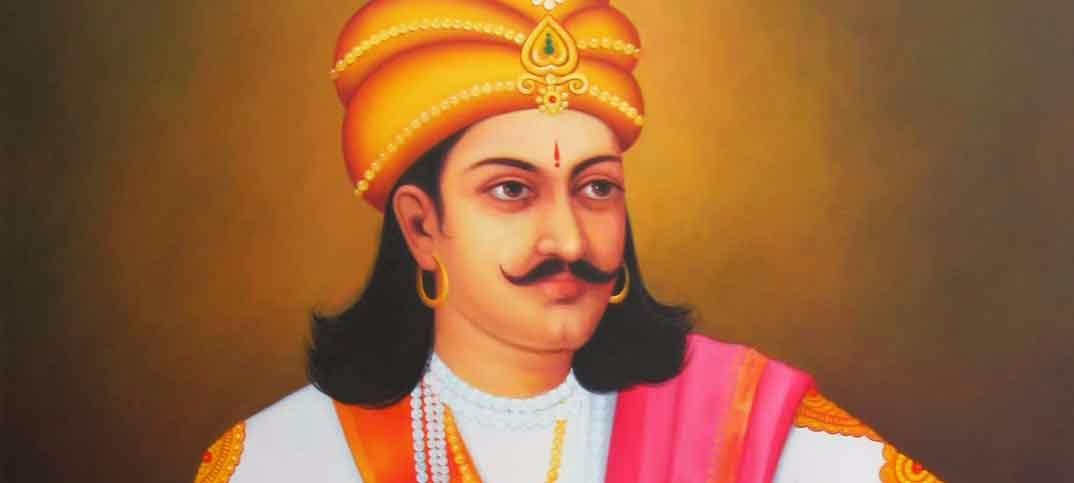
Ashoka started off as a warrior, killing off his older brothers in order to assume power of their grandfather's empire, the Mauryan Empire (Connections, page 54, paragraphs 4-5). After this long and violent war, leading to the deaths of many, Ashoka renounced violence, and began promoting Buddhism throughout his empire. He would go throughout his kingdom building shrines to his religion, called Stupas, which only created a larger influence (Crash Course World History #6). Ashoka was different from other leaders of his time, and those who came before him, as his renouncing of violence and merging of the political and religious side of things were both unusual. Before, the religion would be above or separate from the ruler (see the Caste system and the Mesopotamians), but not with Ashoka.
Bibliography:
Judge, Edward H. Connections: A World History. 3rd ed. Vol. 1. N.p.: n.p., n.d. N. pag. Print.
Crash Course: World History, Episodes 2 & 6